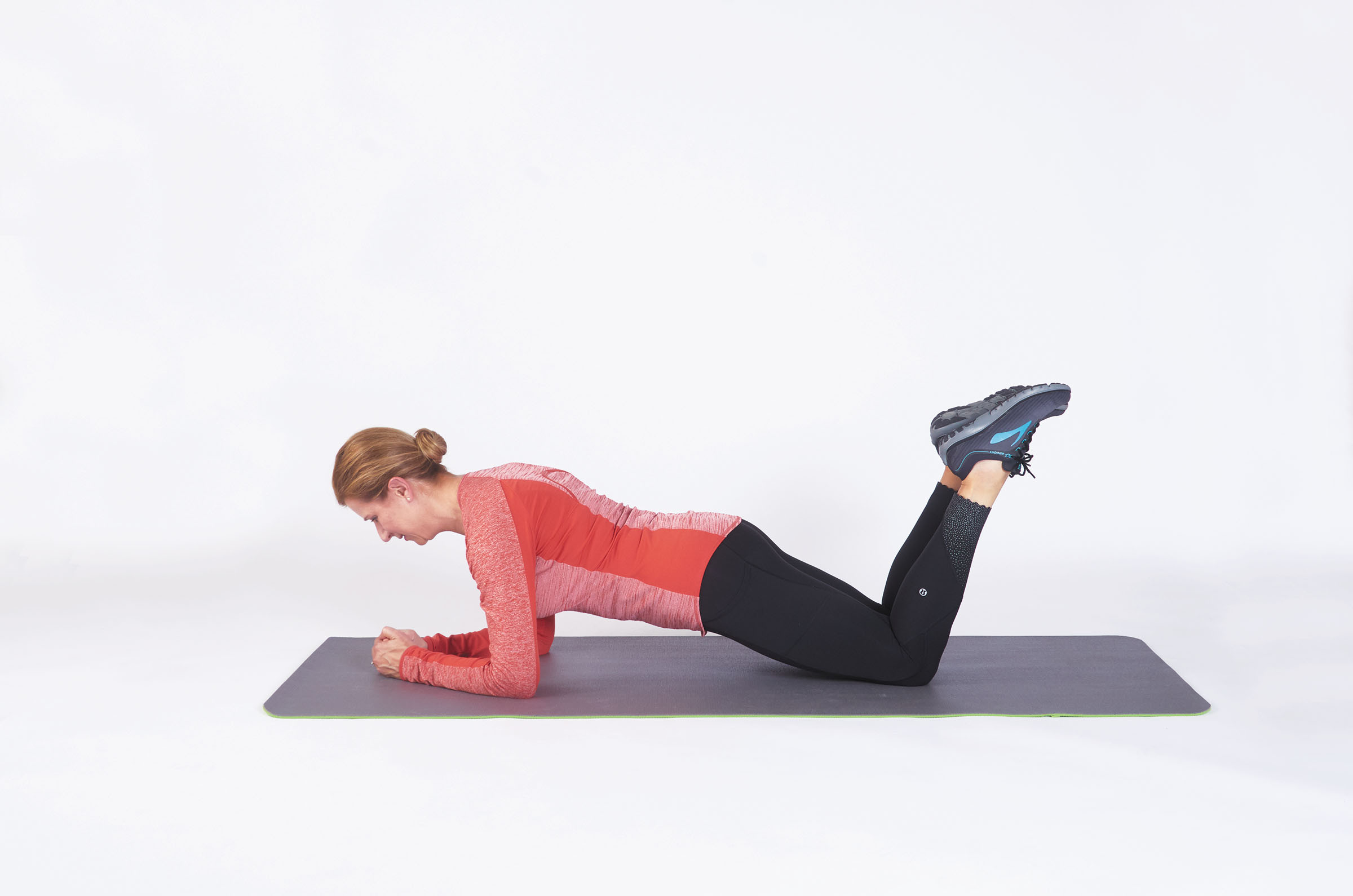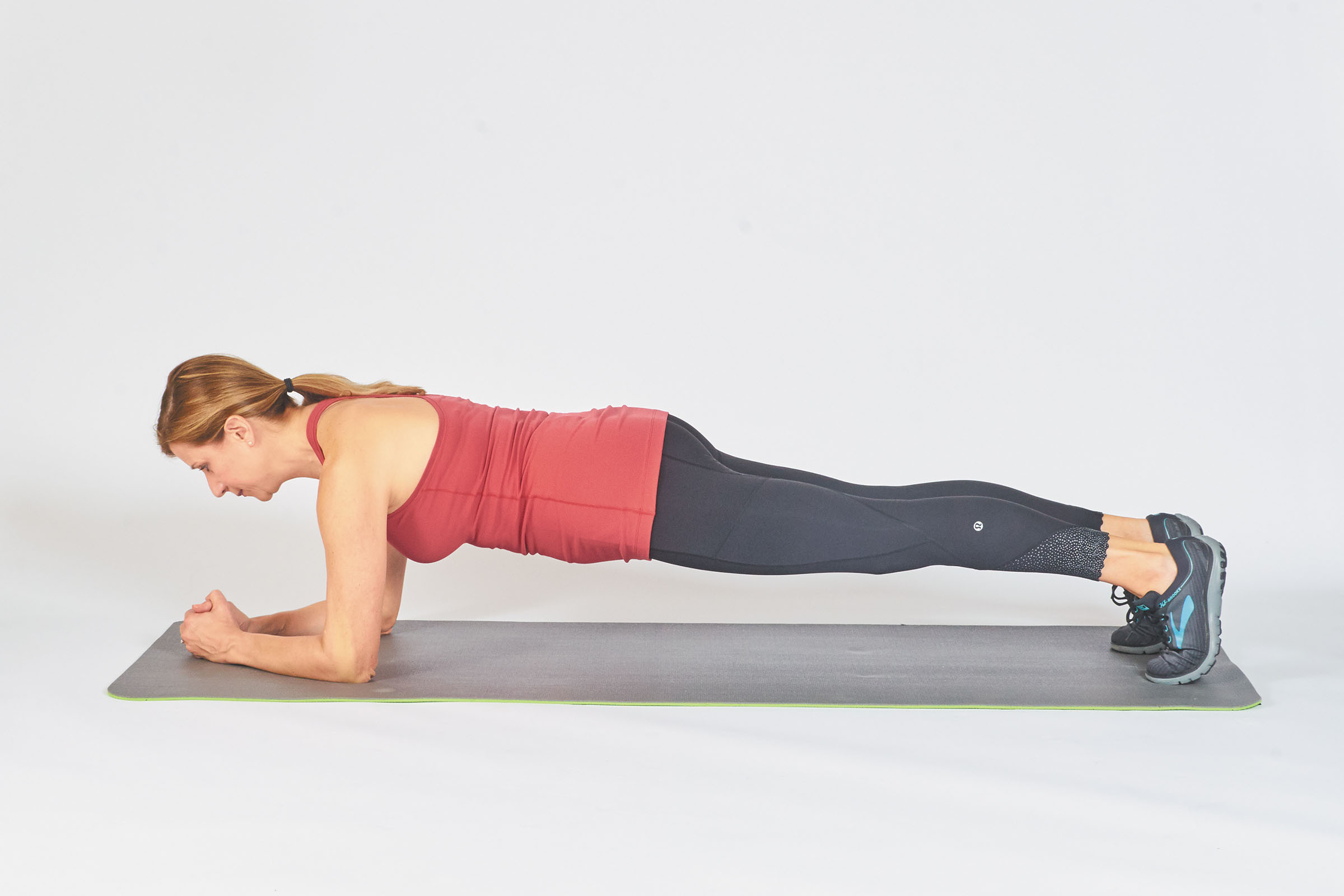Adopting small changes over time can add up to better health in the long term. Focus on building your core strength by adding one simple exercise to your weekly exercise plan — the plank.
The plank position, which looks like the high part of a push-up, works your core muscles, which are the major muscles in the area that connects your upper and lower body. These include the abdominal muscles and those in the back, sides, hips, and buttocks. The core also encompasses the muscles in your pelvis, including those that help support your bladder, uterus, and other internal organs.
Test yourself
First, can you hold a plank? Try the plank with your arms extended or resting on your elbows. Be certain to keep your back straight and your head in a neutral position looking at the ground. If you can’t hold the position, modify the exercise by resting your weight on your knees instead of your feet (sometimes referred to as a modified push-up position). Whatever version you do, time yourself to see how long you can hold the position.
Then repeat the exercise a few times a week, or even daily. Try to gradually increase the number of planks you do or the amount of time you stay in a plank (or modified plank position) over time. Start with one plank a day and build from there and increase your plank hold time gradually.
“If you can hold it for three seconds, try it for four. If you can hold it for four, try to get to 10 seconds,” says Dr. Edward Phillips, assistant professor of physical medicine and rehabilitation at Harvard Medical School.
The ultimate goal is to be able to hold your plank for a full minute. “There’s a saying that when you can hold a plank for a minute, your back pain will be gone,” says Dr. Phillips.
Planks may ease back pain because as your core muscles strengthen, they provide more support for your spine. Having a stronger core can also help you move more easily and make your movements more stable.
Core strength exercises: Planks
Plank tips and techniques
- Keep your neck and spine neutral during the plank.
- Keep your shoulders down and back.
- Don’t bend at your hips.
Modified front plank on knees

- Reps: 1–6
- Sets: 1
- Hold: 10–60 seconds
- Rest: 30–90 seconds between reps
Starting position: Kneel on all fours with your hands and knees directly aligned under your shoulders and hips.
Movement: Tighten your abdominal muscles, and walk your hands forward. Lower your upper body onto your forearms and drop your hips so your body is in line from your head to your knees, like a plank. Clasp your hands and align your shoulders directly over your elbows. Hold. This is one rep. Aim to hold for a total of 60 seconds, doing as many reps as needed to reach that total. For example, if you can hold a plank for 15 seconds, you would do four reps.
Front plank

- Reps: 1–6
- Sets: 1
- Hold: 10–60 seconds
- Rest: 30–60 seconds between reps
Starting position: Kneel on all fours with your hands and knees directly aligned under your shoulders and hips.
Movement: Tighten your abdominal muscles and lower your upper body onto your forearms, clasping your hands together and aligning your shoulders directly over your elbows. Extend both legs with your feet flexed and toes touching the floor so that you balance your body in a line like a plank. Hold. This is one rep. Aim to hold for a total of 60 seconds, doing as many reps as needed to reach that total. For example, if you can hold a plank for 15 seconds, you would do four reps.
More: Ankle Fusion Surgery


